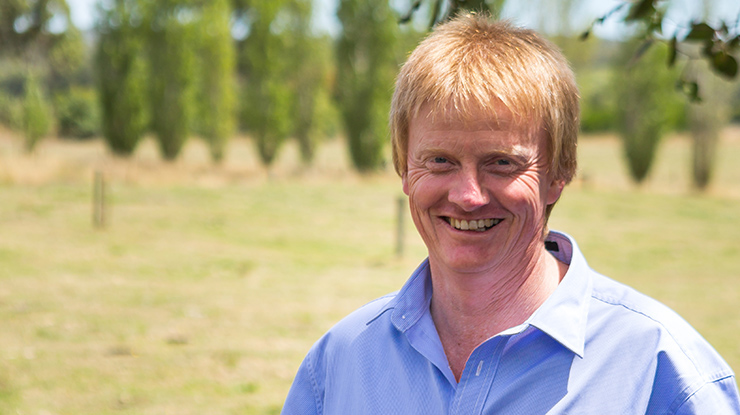Be on the front foot this summer
Although autumn and spring are often the focus for on-farm management decisions, summer is also a critical period for producers, as it creates the opportunity to respond to the outcomes of spring and set pastures and livestock up for the year ahead.
Here, Senior Agronomy Advisor and Board Director at Meridian Ag, Andrew Speirs (pictured), shares his top management strategies for this time of year.
Feedbase
For producers who are coming off a wet spring, it’s important to utilise available pastures as well as prepare them to respond well to the autumn break.
“A lot of producers are going to have good standing dry feed this summer, which they should aim to get back down to around 1,000–1,200kg of dry matter per hectare (DM/ha) before the break,” Andrew said.
“This will ensure they’re getting the most out of that feed, but also setting up the pastures for legume germination when the break arrives.
“Depending on how much summer rainfall you have, there may be a risk in the quality of dry feed dropping quickly – a feed test will help confirm feed quality. If this is the case, focus on supplementation to stop stock losing weight.”
For producers who had a dry spring, Andrew said their feedbase focus should be on removing stock from pastures at the right time to ensure perennial grasses aren’t over-grazed and persistence lost.
“As you start to see small, bare patches appear in your pastures (meaning you are approaching 1,000kg/DM/ha on offer), stock should be removed from these paddocks so grasses have a chance to recover and respond when rainfall arrives.
"Another really helpful tool for those who didn’t have the spring they wanted is to do a feed and water budget in early summer."
“Not only will this help you plan on how to use available feed and water efficiently, but you can also work out if you need to secure product like grain or hay in order to get to the autumn break as well.
“From a water point of view, it gives you the forward planning to either sell stock down without rushing, or to put plans in to find more water in your district if possible.
“Budgeting gives the chance to evaluate the available products on the market and their costs, and you can also consider other options like selling or agisting stock before the feed or water runs out.”
Soil
While most producers elect to do soil testing in spring, Andrew said it’s not too late to carry these out in summer to learn what fertiliser applications for autumn are appropriate.
“With the increasing cost of fertiliser, soil tests are more important than ever to ensure you aren’t wasting money applying product that your country doesn’t need,” Andrew said.
Producers should also use soil tests to determine if soil pH levels are suitable, and adjust these in summer as necessary through lime application.
Livestock
Andrew said there are two critical areas of animal management producers need to focus on through summer:
- maintaining the growth curve of young and growing animals
- maintaining a rising plane of nutrition and building condition score for breeding stock to be joined in autumn.
“The best way to maintain the growth of young animals is to look at the pastures you’re going to run them on to ensure they have suitable energy and protein levels,” Andrew said.
“If you aren’t sure, do a feed test to confirm those levels.”
For breeding stock, in particular ewes, Andrew said a rising plane of nutrition that would put ewes at a condition score of three by joining was key for higher pregnancy rates.
“If you need to supplement stock to achieve that rising plane, it’s a worthwhile investment,” he said.
Animal health
A wet spring can increase the risk of animal health issues in summer, including worms, flies and bloat.
“Sheep producers should monitor faecal egg counts in summer to check if they have worm issues,” Andrew said.
“There’s also a risk of Barber’s Pole in specific areas. You should do a separate worm egg culture test to look for this and get onto it early as it kills sheep quickly.”
Flies can also be an issue, and management strategies include:
- ensuring sheep are well crutched and clean
- considering spray-on fly prevention treatments in high-risk years to reduce flystrike
- keeping young sheep out of taller pastures, as they can stay wet if summer rain arrives.
With good growing conditions for legumes, Andrew said cattle and sheep producers face an increased risk of bloat.
Management tips include keeping bloat oils and licks on hand, rotating stock on and off high-risk pastures, and providing stock with quality fibre.
Clostridial vaccinations should be up-to-date in sheep and cattle over the summer to avoid issues such as red gut and pulpy kidney when on quality legume pastures such as lucerne.
|
SEASONAL ACTION PLAN 1. Perform feed and water budgets in summer – MLA has tools including a stocking rate calculator, feedbase planning and budgeting tool and rotation planner at etools.mla.com.au 2. Aim to efficiently utilise your feedbase before the autumn break, grazing it back to 1,000–1,200kg dry matter per hectare (DM/ha). 3. Monitor for flies and bloat, particularly if you have had a wet spring – scan this QR code or visit paraboss.com.au for parasite control resources. |




